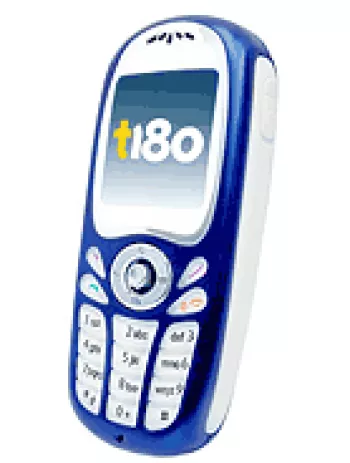
Overview
The Telit C1000 is a feature phone that was introduced to the market in the first quarter of 2005. It is a basic mobile device emphasizing essential communication functionalities, with a simplistic approach to design and technology typical of its era. Being a discontinued model now, the Telit C1000 represents a glimpse into the early 2000s mobile phone industry, marked by minimalistic features and practical usability.
Design and Body
The Telit C1000 boasts a compact and lightweight design, with dimensions of 86 x 48 x 15.6 mm (3.39 x 1.89 x 0.61 inches) and weighing only 74.5 grams (2.61 ounces). It offers a comfortable grip and is portable, fitting easily into pockets and bags. The device uses a Mini-SIM and comes equipped with a TFT resistive touchscreen displaying 256K colors, however, the size of this display is not specified. The screen resolution stands at 128 x 160 pixels, giving a reasonable visual output suitable for the primary functions of calling and messaging.
Network and Connectivity
The network capabilities of the Telit C1000 are tailored to the GSM standard with support for 900/1800 2G bands. The device enables GPRS class 8 connectivity, though it does not support EDGE or more advanced mobile data technologies commonly found in later models. Notably, the device does not support WLAN, Bluetooth, GPS, or FM radio, focusing thus on its core function as a communication device for calls and SMS.
Camera
Equipped with a single VGA (0.3MP) main camera, the Telit C1000 offers basic photography features. It is accompanied by an LED flash, enhancing photo quality in low light conditions. However, it lacks advanced camera functionalities such as video recording and a front-facing selfie camera.
Memory and Storage
The Telit C1000 provides an internal storage capacity of 5.5MB, without the option of expandable memory via a card slot. Such specs are efficient enough for storing essential contact information, with a phonebook capacity of up to 300 entries. The phone, however, does not offer extensive media storage options given the absence of a memory card slot.
Sound and Alerts
Sound capabilities of this phone include downloadable polyphonic ringtones and vibration alerts. A loudspeaker and a 3.5mm jack are absent, limiting the phone to a basic auditory output suitable for its primary function of calls and message alerts.
Communication and Features
The Telit C1000 offers basic messaging functionalities including SMS, EMS, and MMS. It features a WAP 1.2.1 browser for internet access, albeit limited by the network connectivity options of the time. While users can enjoy pre-installed games and download new ones, the device lacks support for Java applications, which narrows the scope of possible applications and enhancements. There's no sensor technology integrated into this device, reflecting its focus on core communication functions.
Battery Life
The device runs on a removable Li-Ion battery, providing a standby time of up to 100 hours and a talk time of up to 2 hours. This reflects typical mobile usage patterns of the time and underscores the telephone's focus on communication rather than multimedia use.
Conclusion
In summary, the Telit C1000 showcases the essentials of mobile communication technology prior to the widespread adoption of smartphones. Its lack of advanced features, such as expandable memory or extensive connectivity options, underscores its role as a primary communication device. Although now discontinued, the Telit C1000 remains a representation of the early generation of mobile devices, highlighting the industry’s rapid evolution and the growing consumer expectations that drove technological advancement.
Key Features of Telit C1000
- Compact and lightweight design with dimensions of 86 x 48 x 15.6 mm and weight of 74.5 g.
- GSM technology supporting 2G bands GSM 900 / 1800.
- TFT resistive touchscreen displaying 256K colors.
- Storage options include an internal memory of 5.5MB with a phonebook capacity of 300 entries.
- VGA main camera featuring an LED flash.
- Messaging capabilities include SMS, EMS, and MMS.
- WAP 1.2.1 browser for internet browsing.
- Supports downloadable games for entertainment.
- Removable Li-Ion battery with up to 100 hours stand-by time and up to 2 hours talk time.
Disadvantages of Telit C1000
- Lacks EDGE support for faster data connectivity.
- Discontinued status means lack of support and updates.
- No card slot for expandable memory; limited to 5.5MB internal storage.
- VGA main camera without video capability.
- No front-facing (selfie) camera.
- No loudspeaker or 3.5mm audio jack for using headphones.
- No WLAN or Bluetooth connectivity options.
- Absence of positioning features (e.g., GPS).
- No FM Radio feature.
- Uses proprietary USB port, limiting compatibility with standard cables.
- Lacks advanced sensors found in modern phones.
- Limited browser capabilities (WAP 1.2.1).
- No support for Java applications.
- Short battery life with only up to 100 hours stand-by and 2 hours talk time.
View Also
More Phones
All Rights Reserved +13671 Phones © Mobilawy 2025

























